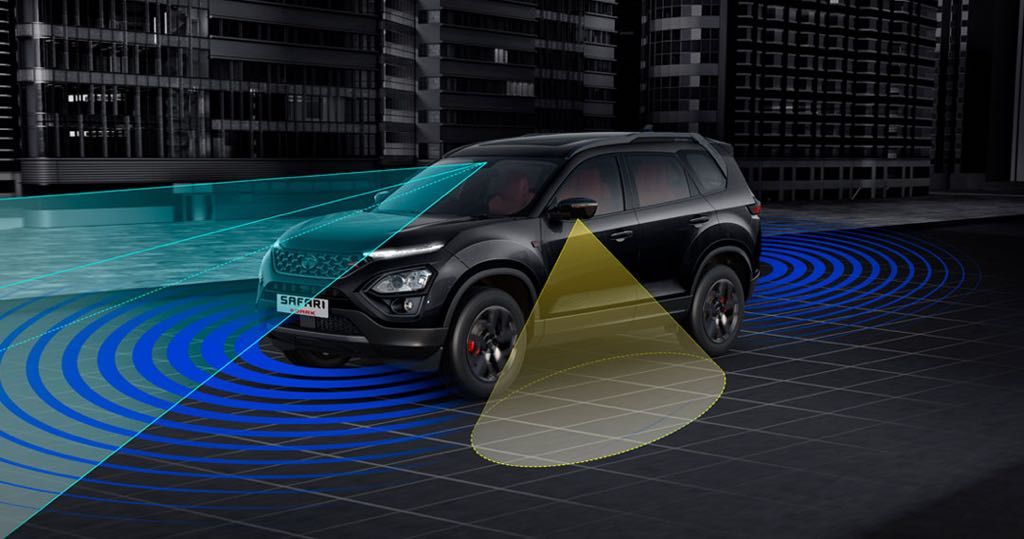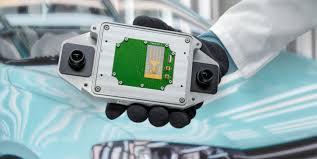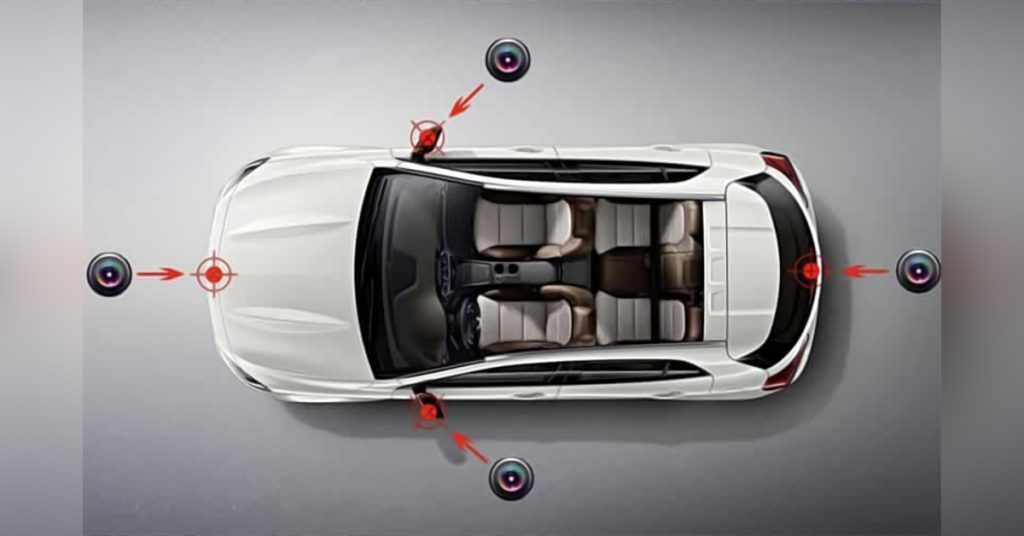Your Car's New Co-Pilot, ADAS: How does it works
Published On 28/7/2024, 7:56:35 am Author Uttkarsh SinghTraffic jams, distracted drivers, and unexpected obstacles are just a few of the hazards we encounter. But what if your car could have a sixth sense, a built-in guardian angel to watch your back?

ADAS(Advanced Driver Assistance Systems) are made up of sensors. These little electronic eyes and ears are constantly scanning the road, looking for potential threats. There are cameras to see, radar to sense objects, and even lasers (yep, like something out of a sci-fi movie) to create a 3D map of your surroundings.
The car's sensors, mainly radar, lidar, and cameras gather information about the surrounding environment. Each of these sensors has a unique role:
Radar (Radio Detection and Ranging): Radar sensors use radio waves to detect objects and measure their distance and speed. They are particularly effective in adverse weather conditions like rain, fog, or snow. Radar sensors are typically made of a transmitter, receiver, and an antenna. They send out radio waves and measure the time it takes for the waves to bounce back from objects, calculating distance and speed.
 Radar sensors are often mounted behind the front bumper. This location is ideal for detecting objects and vehicles ahead, enabling features like adaptive cruise control and forward collision warning.
Radar sensors are often mounted behind the front bumper. This location is ideal for detecting objects and vehicles ahead, enabling features like adaptive cruise control and forward collision warning.
Rear-mounted radar sensors assist with blind-spot monitoring, rear cross-traffic alert, and parking assistance. Some cars have radar sensors in the side mirrors to enhance blind-spot detection and lane-change assistance.
Lidar (Light Detection and Ranging): Lidar sensors use laser beams to create a detailed 3D map of the environment. They measure the time it takes for the laser beams to hit an object and reflect back. Lidar sensors are composed of a laser, a scanner, and a specialized GPS receiver. They are known for their high precision and accuracy in detecting the shape and distance of objects.
 In some autonomous vehicles and advanced prototypes, lidar sensors are mounted on the roof to provide a 360-degree view. This elevated position helps create a detailed map of the surrounding environment.. For a more discreet look, lidar sensors can be integrated into the front grille. This location still offers a wide field of view for detecting objects and obstacles ahead.
In some autonomous vehicles and advanced prototypes, lidar sensors are mounted on the roof to provide a 360-degree view. This elevated position helps create a detailed map of the surrounding environment.. For a more discreet look, lidar sensors can be integrated into the front grille. This location still offers a wide field of view for detecting objects and obstacles ahead.
Cameras: Cameras capture visual information, which is used to recognize objects, read traffic signs, and detect lane markings. These cameras are often mounted around the vehicle to provide a 360-degree view.

How ADAS works
Once this sensory data is collected, it is transferred to the car's central processing unit (CPU), often referred to as the Electronic Control Unit (ECU). The ECU acts as the brain of the car, processing the data and making real-time decisions to ensure safety and efficiency.
As of now, they have enabled vehicles to achieve Level 2 autonomy. This means the car can control both steering and acceleration/deceleration, but a human driver must be ready to take control at any moment. Level 2 systems include features like adaptive cruise control, lane-keeping assist, and automatic emergency braking. Even Tesla's Autopilot and FSD systems are classified as Level 2 autonomous driving according to the SAE (Society of Automotive Engineers) scale. This level indicates that the system can perform certain driving tasks but requires human oversight and intervention.
ADAS level of Indian Vehicles
The Indian automotive market is witnessing a surge in Advanced Driver Assistance Systems (ADAS), primarily within the Level 1 and Level 2 autonomy categories defined by the Society of Automotive Engineers (SAE). Models like the Tata Safari and Mahindra XUV700 offer Level 2 autonomy, equipped with features such as Adaptive Cruise Control (ACC), Lane Keep Assist (LKA), Automatic Emergency Braking (AEB), Blind Spot Detection (BSD), and Traffic Sign Recognition (TSR). These systems enable more hands-off driving, particularly on highways, but constant driver attention remains crucial.
Hyundai and Kia models, including the Creta, Tucson, and Seltos, typically feature Level 1 ADAS with functionalities like Blind Spot Detection (BSD), Rear Cross-Traffic Alert (RCTA), Driver Attention Warning (DAW), Lane Departure Warning (LDW), and Forward Collision Warning (FCW).
What do you need to study to design ADAS features
Recommended Path
Undergraduate Degree: Obtain a bachelor’s degree in Mechanical, Electrical, or Automotive Engineering. Specialized Courses: Take elective courses in control systems, embedded systems, machine learning, and computer vision. Hands-on Experience: Gain practical experience through internships and projects focused on ADAS. Postgraduate Studies: Consider pursuing a master’s degree with a focus on ADAS and autonomous driving.
ADAS Engineer Salary in India and Abroad
Advanced Driver Assistance Systems (ADAS) engineers are in high demand worldwide due to the rapid advancements in autonomous and semi-autonomous vehicle technologies. Salaries for ADAS engineers can vary significantly based on factors such as location, experience, educational background, and the specific company.
Salaries in India
In India, ADAS engineers typically earn competitive salaries, reflecting the growing importance of automotive safety and innovation.
Entry-Level (0-2 years): Average Salary: ₹4-8 lakhs per annum Roles: Junior ADAS Engineer, Trainee Engineer Companies: Tata Motors, Mahindra & Mahindra, Bosch India, Continental Automotive India
Mid-Level (2-5 years): Average Salary: ₹8-15 lakhs per annum Roles: ADAS Engineer, System Engineer, Software Developer Companies: Maruti Suzuki, Hyundai India, Robert Bosch, Wipro, Infosys (automotive divisions)
Senior-Level (5+ years): Average Salary: ₹15-30 lakhs per annum Roles: Senior ADAS Engineer, Lead Engineer, Project Manager Companies: Tech Mahindra, HCL Technologies, Mercedes-Benz Research and Development India, TCS
Salaries Abroad
Salaries for ADAS engineers abroad are generally higher than in India, reflecting the more mature markets and advanced technology landscapes in regions like North America and Europe.
United States:
Entry-Level: Average Salary: $70,000 - $90,000 per annum Companies: Tesla, Waymo, General Motors, Ford, NVIDIA
Mid-Level: Average Salary: $90,000 - $120,000 per annum Roles: ADAS Software Engineer, System Engineer
Senior-Level: Average Salary: $120,000 - $180,000+ per annum Roles: Senior ADAS Engineer, Technical Lead, Project Manager
Europe:
Entry-Level: Average Salary: €50,000 - €70,000 per annum Companies: BMW, Audi, Bosch, Continental, Valeo
Mid-Level: Average Salary: €70,000 - €100,000 per annum Roles: ADAS System Engineer, Software Developer
Senior-Level: Average Salary: €100,000 - €150,000+ per annum Roles: Senior Engineer, Project Lead, ADAS Manager
United Kingdom: Entry-Level: Average Salary: £35,000 - £45,000 per annum Companies: Jaguar Land Rover, Rolls-Royce, Delphi Technologies
Mid-Level: Average Salary: £45,000 - £60,000 per annum Roles: ADAS Engineer, Embedded Systems Engineer
Senior-Level: Average Salary: £60,000 - £90,000+ per annum Roles: Lead Engineer, ADAS Project Manager
















